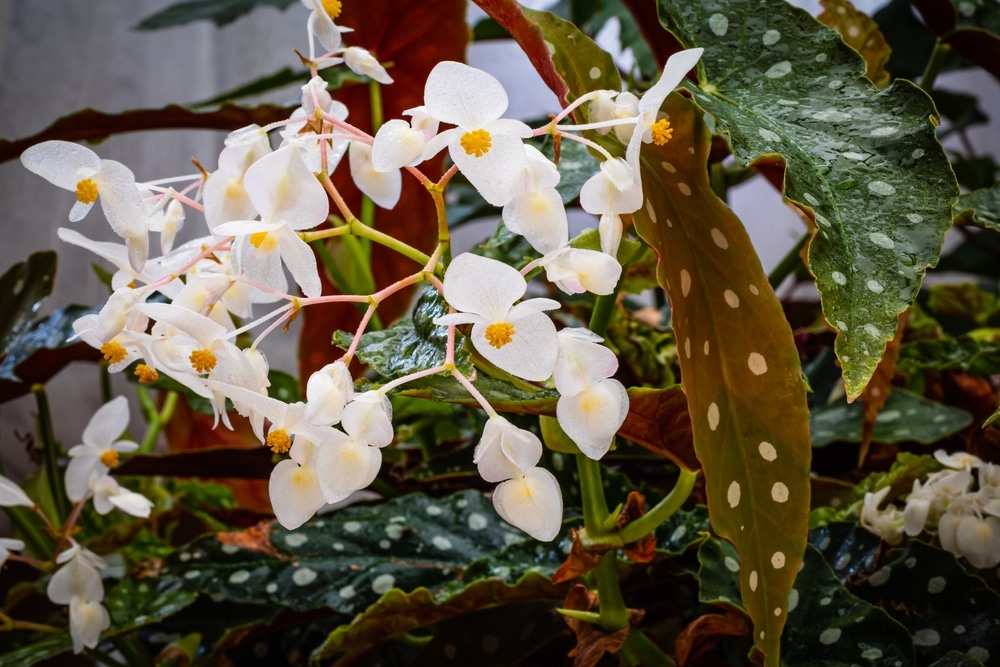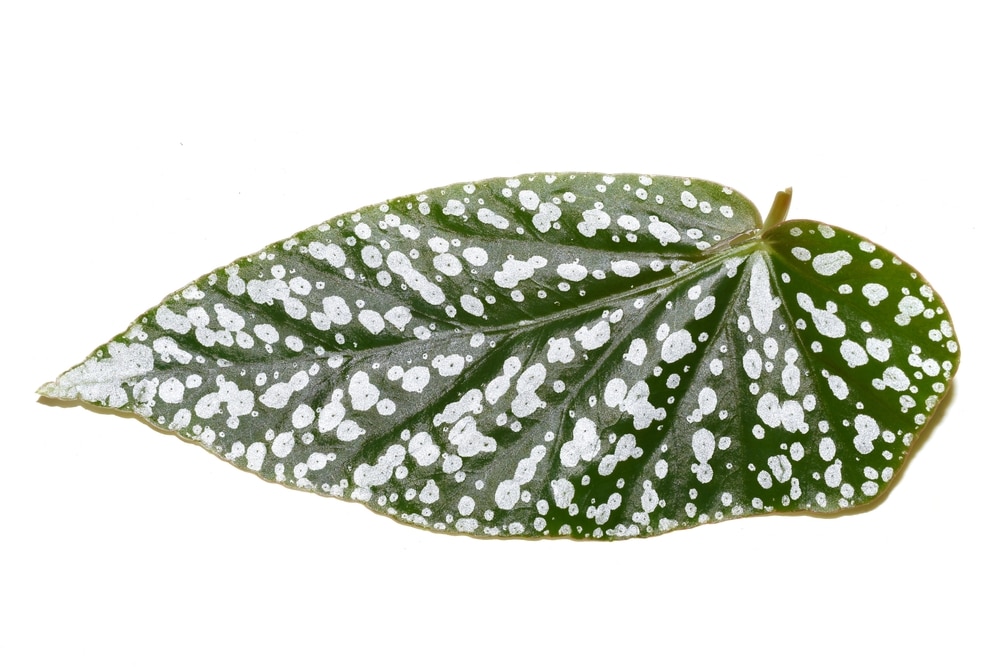Shake and Feed for Begonias and Maples
The angel wing begonia is mainly found in Brazil. It can also be grown indoors all year round, provided the right conditions are met. Not only do these plants have big and beautiful leaves, but they also have an amazing display of flowers.
The flowers on this plant are unique in their color and shape. When it comes to begonias, there are many different types; however, the angel wing begonia is one of the most popular.

| Botanical Name | Begonia x corallina |
| Common Name | Angel wing begonia |
| Plant Type | Perennial shrub |
| Flower Color | Pink, red, white, orange |
| Size When Mature | 12-30 in. tall, 12-24 in. wide |
| Bloom Time | Summer, Early fall |
| Sun Requirements | Partial shade |
| USDA Hardiness Zones | 10-11 |
| Soil PH Range | 6.1 to 6.5 |
| Soil Type | Well-draining, slightly acidic soil |
| Water Needs | Medium |
| Native Area | South America |
What You Need to Know About Angel Wing Begonia
The angel wing begonia is a beautiful houseplant that can add a touch of color to any room. These begonias are characterized by their drooping clusters of flowers, which come in a range of white, orange, pink, or red.
Providing angel wing begonia plants with the appropriate lighting and fertilizer is critical to stimulate blooming when growing them indoors. Depending on the cultivar, the plant blooms during late winter through late fall. Some species may blossom several times throughout the year.
The leaves of these plants have a somewhat angel-like shape, and their name comes from the resemblance to Angel wings. Some types feature glossy green leaves with a red outer edge and underside. When grown indoors at eye level, where the top and bottom of the plant may be seen, their crimson undersides make them appealing.
However gorgeous, it is also important to remember that the plant is toxic to pets.
How to Care for Angel Wing Begonia

Here's everything you need to know about growing and caring for a thriving Shamrock Plant.
Light
They like indirect light year round, making them an excellent choice for areas that don't get much natural light. They are not, however, as resilient to direct sunlight as some other types of plants, so it's important to avoid putting them in a position where they will be exposed to direct sunshine for more than a few hours at a time.
If you don't want your plant to flower, you can keep it in a partial shade. This will prevent it from blooming, but it will still grow well.
Enough light is important for the plant to properly develop its leaves and flowers. If the plant doesn't get enough light, it will become leggy and won't produce any blooms. On the other hand, too much light can cause the edges of the leaves to curl and turn brown.
Water and Soil Needs
Angel wing begonias prefer to be kept constantly wet, and you can tell if they're need of water because the leaves on their edge begin to brown. Once the soil has been watered about an inch from the surface, soak the plant fully before allowing it to drain.
These begonias like their soil to be damp but not soggy. Allow the top inch of soil to dry out between waterings, and be sure to provide plenty of drainage. Over-watering can cause the leaves to turn yellow and drop off, so it's important to be careful not to overwater.
One important aspect of care is ensuring the plant is potted in the right soil. The soil should be moist (but not soggy) and rich in organic matter. A slightly "heavy" soil will allow the plant's vast root system to establish well and support its tall stems properly.
Additionally, it's essential to use a pot that will help wick away excess moisture. Terracotta or clay pots are ideal for this purpose. African Violet ready-made potting soil or a rich soilless well-draining potting mix will also work well.
Temperature Requirements

The ideal temperature range for an angel wing begonia is 65 to 75 degrees Fahrenheit. However, if the temperature dips below 50 degrees Fahrenheit, the plant may be damaged or even killed. Additionally, it is vital to keep the plant away from drafts or strong breezes, as this can also damage the leaves.
This means keeping them away from open windows in the winter or air conditioners during the summer. They're also relatively resilient, thriving in USDA zones 10 to 11.
Fertilizer
Feeding your angel wing begonia is essential to keeping it healthy and preventing leaf burn. Begonias should be fed monthly during the spring and summer when they are actively growing. However, you can reduce feeding to every other month during the rest of the year. It is important to always dilute the plant food to 1/2 the recommended strength and to only feed begonias when the soil is damp.
Common Diseases
Unfortunately, angel wing begonias are susceptible to several diseases and pests. However, you can prevent or mitigate many of these problems with proper care.
The most common disease is called powdery mildew. This fungus appears as a white powder on the plant's leaves and can cause them to turn yellow and drop off. Powdery mildew is most likely to occur in humid conditions with little air circulation. Water your plant from below to prevent powdery mildew and keep the leaves dry.
Leaf spot is another prevalent problem. Leaf spot is a term used to describe several disorders that cause yellow halos on the leaves of plants.
This illness typically emerges when plant leaves are kept wet, or the soil is excessively soggy. Like all fungal and bacterial ailments, improved airflow, well-drained soil, dry leaves, and avoiding overhead watering can help prevent leaf spot.
Angel Wing Begonia Propagation
Many gardeners are surprised to learn that begonias can be easily propagated from cuttings. In fact, angel wing begonias are some of the easiest plants to propagate in this way. Remove a 2 to 3 inch leaf-tip cutting that doesn't have flowers on it and insert it cutting-side down in the spring, when new growth is emerging.
Keep the clipping moist and warm until new growth starts. You can tell that the cutting has rooted when you see new growth emerging from the center of the plant.
Once the plant has rooted, you can transplant it into a pot or your garden. With just a little bit of care, you can easily propagate angel wing begonias from cuttings.
Source: https://www.gfloutdoors.com/angel-wing-begonia-care-everything-you-need-to-know/
Belum ada Komentar untuk "Shake and Feed for Begonias and Maples"
Posting Komentar